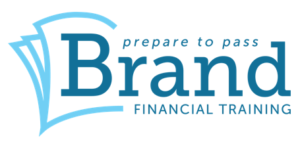For Professional Paraplanner’s TDQ (Training, Development and Qualifications) series, we have teamed up with key support providers, such as Brand Financial Training, to provide our readers with the very best in training, development and exam support.
This series aims to provide you with valuable advice and guidance materials to help you achieve your training goals, perfect your exam techniques and test your knowledge of the financial services market.
The following 10 questions, which can also be found in our September 2020 issue, relate to examinable Tax year 19/20, examinable by the CII until 31 August 2020.
QUESTIONS
1. Pauline is the holder of a financial option; what choices are available to her? Tick all that apply.
A. Sell the option.
B. Exercise the option.
C. Buy the option.
D. Let the option expire worthless.
2. Under the identification rules used for calculating CGT on shares of the same type and class acquired at different times, how are shares grouped? Tick all that apply.
A. Acquisitions within the following 90 days
B. Acquisitions on the same day
C. Acquisitions arising from a rights issue
D. Acquisitions in the share pool
3. Mary is receiving an income under an earmarking order. How will this be taxed?
A. On the member at the basic rate of income tax
B. On the member at their highest marginal rate of income tax
C. On Mary at the basic rate of income tax
D. On Mary at her highest marginal rate of income tax
4. Jack, who is married to Vera, has an endowment policy approaching maturity. The life office’s form of discharge can be signed by:
A. Jack or his solicitor
B. Jack or Vera
C. Jack or anyone appointed by him
D. Jack only
5. Within trust law, trustees must consider the standard investment criteria – what does this comprise of?
A. The need for diversification and suitability of investment
B. Due diligence and productivity
C. The power to appoint investment managers
D. Duty to invest the trust fund and keep accurate accounts
6. Why would file reviews be a useful Management Information (MI) tool in evaluating a firm’s ethics?
A. To understand what a firm’s client bank typically consists of which allows for a more effective marketing strategy
B. To assess the overall standard of paperwork produced before, during and after advice to identify any trends that are of concern
C. Files are tangible objects and so analysing data is more straightforward
D. Files can be analysed as part of the new business submission process so not adding additional pressure to the firm’s administration staff
7. Why is the market price for “A” ordinary shares usually lower than ordinary shares?
A. They rank behind ordinary shareholders in the event of liquidation
B. They don’t qualify for dividends until the dividends on ordinary shares have reached a pre-determined level
C. Shareholders of “A” ordinary shares are entitled to a smaller proportion of profits than ordinary shareholders
D. The shareholders of “A” ordinary shares receive the same dividend although they have either restricted or no voting rights
8. What is the essential difference between a Lifetime Mortgage and a Home Reversion Plan?
A. A Lifetime Mortgage lasts for the mortgagee’s lifetime but a Home Reversion Plan is for a set time period
B. A Lifetime Mortgage can typically only be taken out by over 55s whereas a Home Reversion Plan can be taken out at any age
C. A Lifetime mortgage is a loan secured against a property; a Home Reversion Plan is not a loan but involves the sale of the property;
D. Lifetime mortgages tend to have a much lower interest rate than Home Reversion Plans
9. Anna, aged 70, owns her own property and she wishes to retain full ownership. She would like to raise £15,000 for home improvements shortly and a further £10,000 next year to pay for a holiday with her family. Which equity release scheme would be most appropriate for her?
A. Home Income Plan
B. Home Reversion Plan
C. Drawdown mortgage
D. Interest only mortgage
10. James, a first-time buyer, is entering into a mortgage contract with a lender. At what point should he receive a Key Facts Illustration (KFI)?
A. Before he submits an application form
B. Once he has submitted an application form
C. Before his application form has been accepted
D. Once his application form has been accepted






























